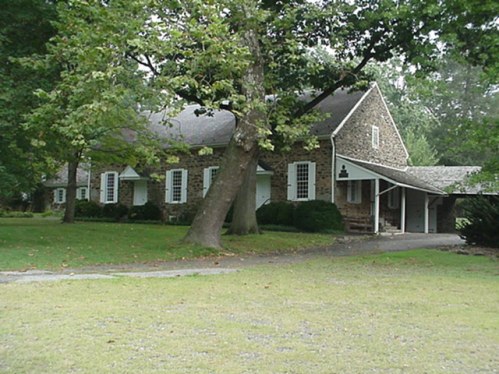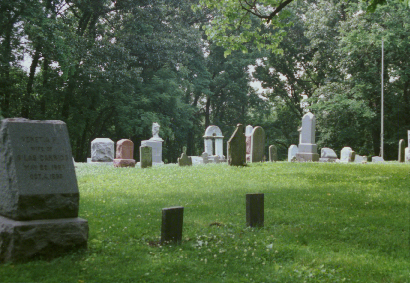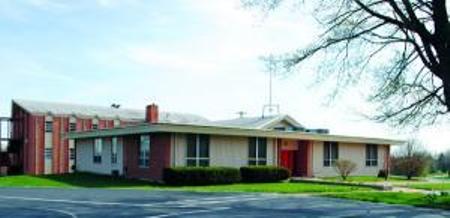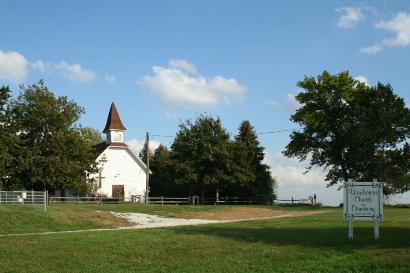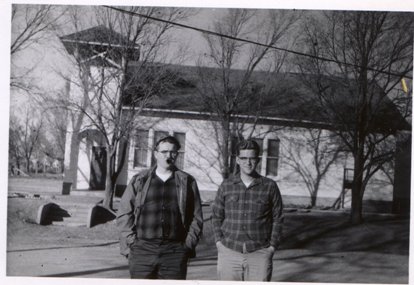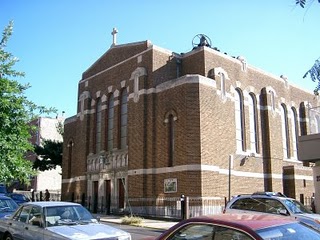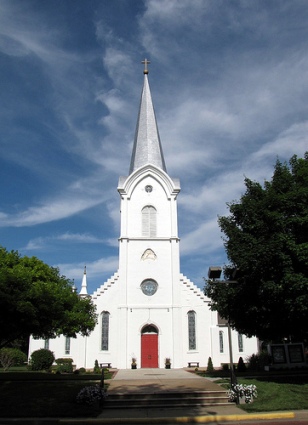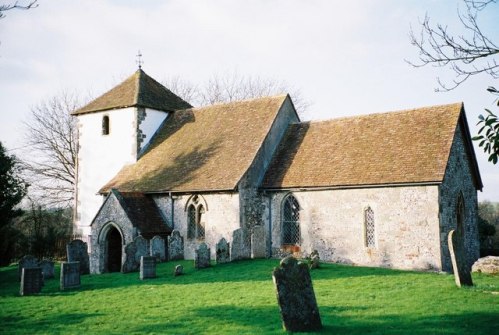|
|
While my kin eventually left the Quaker Church (or were “disowned” for improper behavior such as marrying non- Quakers), family tradition has it that our Quaker heritage shaped some of our personality, which trends toward the mild and peacemaking (in most, though not all, members of the family). And many of my family branches dispersed west across the new land along the general path followed by Quaker settlement – Pennsylvania, Ohio, Indiana, Illinois, Iowa. Then there were the Piggott, Patterson, and Rogers families: settlers in Missouri before it was part of the United States. (It was Spanish, then, briefly, French.) They brought with them their new Methodist and Baptist faiths and helped found the oldest Protestant cemetery west of the Mississippi still in use, the Cold Water Cemetery
near present-day Florissant, Missouri, which was originally associated with a small Methodist church erected in 1808 that was later converted into a Baptist church. Numerous of my people are interred there. My maternal grandmother was born near there. In fact, my mother’s family to this day are almost all Methodists, with an occasional dalliance with the Baptists.
In Iowa, the Blairs and Linvilles of my father’s family helped found the first church of any denomination in Mills County (east of Omaha) in 1853. The Wahbonsie Church (Disciples of Christ) is still standing, in a later construction, though now used only occasionally.
Great-great Grandpa Thompson Milton Blair and his wife Sarah Linville Blair both signed the original Articles of Organization. Many in their rural frontier community were members. And my great-great-great grandfather Zachariah Linville, Sarah’s father, died while trying to bring religion to the gold miners of early California, where he is buried on a hillside near the former Hangtown (now Placerville). Part of family lore, and true. My paternal aunts and uncles in western Oklahoma mostly centered their Sundays, marriages and burials, around the Christian Church (Disciples of Christ) near the center of Camargo, which is located on a terrace of arable land above the South Canadian River. It’s the only church I can remember ever noticing in Camargo (though I understand there are a couple of others).
My wife’s family, German Catholics, settled in the late 19th century in a Catholic neighborhood in Brooklyn that to this day has a parish church in almost every other block (though several have closed as demographics changed in the last 50 years). The Franz and Rohner families were almost forced by their religion to stay in New York after immigrating, or at least to settle in a large urban area, because that’s where they could find a Catholic community in this country that was largely settled by Protestants, at least up to that point in our history.
And the landscape of some parts of the country reflects this immigration of religious communities. Where I grew up, in central Kansas, the countryside is dotted for miles by scores of ethnic churches. In one area, west of Wichita, all of them are Catholic, parishes founded by settlers from the German Rhineland Palatinate. St. Marks, St. Mary’s, St. Joe, and others now subsumed in larger towns. Another, larger area to the north of there is dominated by Mennonite churches founded by groups forced out of the Volga area of Russia when their exemption from military duty was revoked around 1870. Alexanderwohl, Goessel, Hesston, New Gottland, Waldeck. And farther north of there, the rich valley of the Smoky Hill River was settled by Swedish Lutherans, in towns such as Smolan and Falun and Lindsborg. To this day Lindsborg hosts a Svensk Hyllningsfest every October, centered on the Lutheran college and church in the center of town and featuring lots of Smörgåsbord.
The character of several thousand square miles of Kansas prairie settlements was established by these religious groups. Even the landscape was affected, as several groups brought with them a Central European practice of tilling farmland in long, narrow strips where crops were rotated. And the Mennonites are credited with introducing winter wheat to Kansas, where to this day it remains the most important grain crop. Students of genealogy know that church records can be one of the most valuable resources for documenting births, baptisms, marriages, and deaths. Especially the Mormons, Quakers, Catholics and Anglican/Episcopalian churches keep careful records and often will share them with outsiders, if asked politely. I got much aid in tracing some of my Quaker roots from a friendly researcher at Earlham College (Quaker) in Indiana. Thousands of family history buffs seek assistance from Mormon records. And the parish registers of England, Scotland, Wales, and Ireland (and other countries, wherever the records have survived centuries of wars and civil disruption) are essential documents for anyone tracing their earliest antecedents.
Religion is still a major part of our lives for most; and in the past it was often, literally, the center of life,
the hub of history. Knowing about your family’s religious traditions can be a valuable guide to understanding who you
are, and where you came from. Pretty obvious, yes; but worth repeating.
Click on author's byline for bio and list of other works published by Pencil Stubs Online.
|



